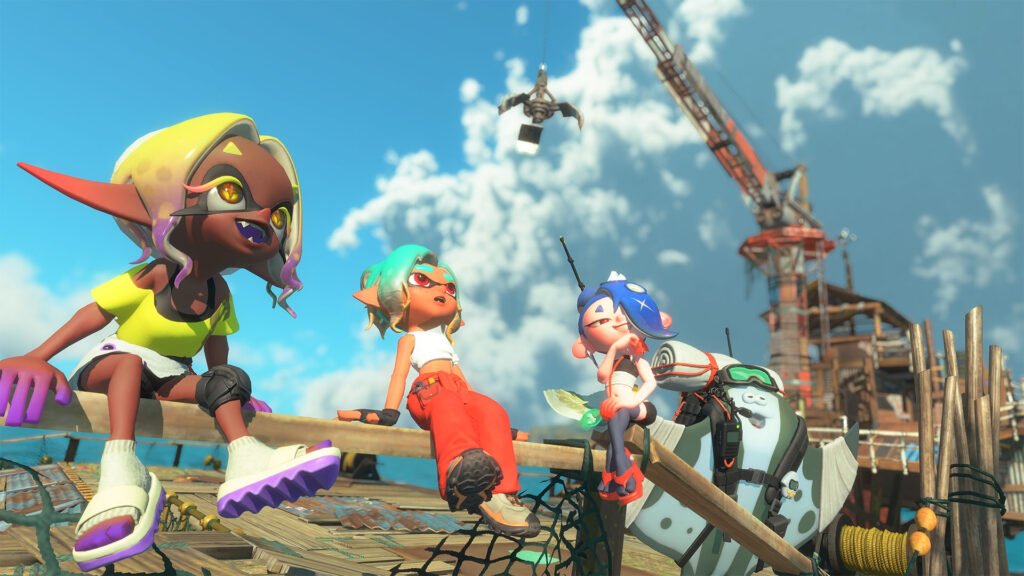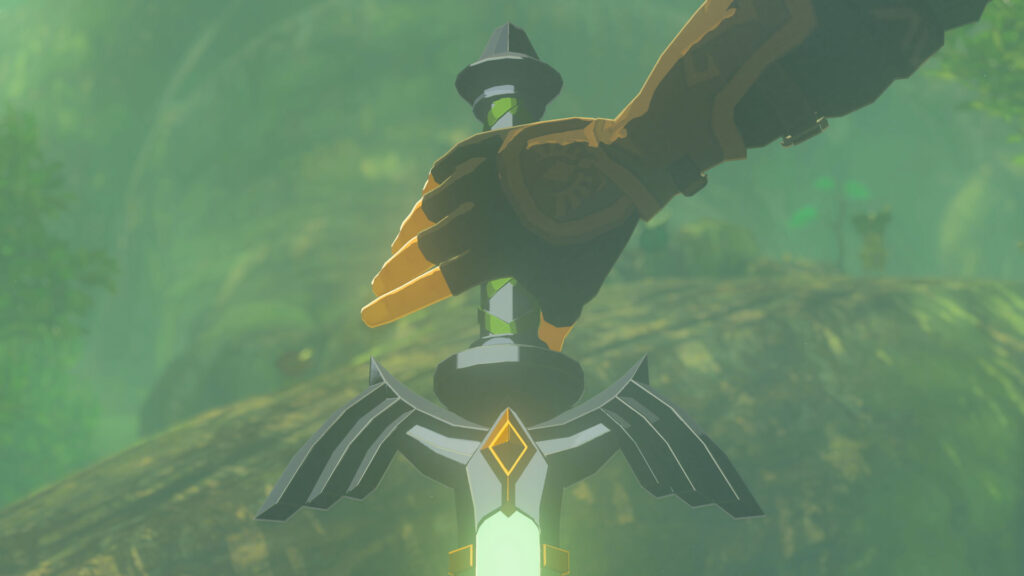With the release of Diablo III’s expansion Reaper of Souls around the corner, what better time than now to reflect back at how the game has changed over the last 22 months? Originally released on May 15, 2012 on the PC and Mac, Diablo III was one of the most highly anticipated games of the year. As the third instalment in the popular Diablo series, the game had extremely high expectations leading up to its release, which was evident when it became the fastest-selling PC game ever in history with 6.3-million copies sold in its first week of availability. In the first 24 hours alone, Diablo III saw over 3.5-million copies sold.
But the game had plenty of major issues, especially at its launch. The dreaded Error 37 became the center of attention, with even non-gamers hearing about the server problems hindering the launch of the game. Players argued that Blizzard shouldn’t had made Diablo III online only, especially given how much the servers struggled on capacity, and some even went so far as to get refunds. Things ultimately stabilized for the game, which then opened the door to plenty of gameplay criticisms.
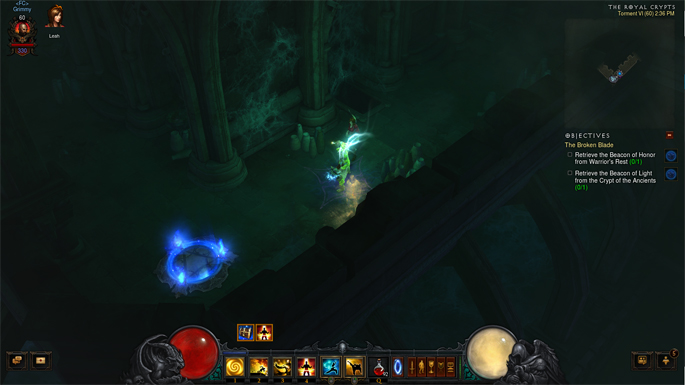
Early gold farmers will find this to be a familiar sight
The Launch
Shortly after the game was released, the Auction House became the center of controversy. Players felt, and rightfully so, that drop rates were nerfed due to the Auction House’s presence, and the satisfaction of slaying hordes of demons and undead for epic loot was non-existent. Then there was the argument that Inferno was way too hard, with players resorting to smashing vases and jars for gold and items. Before June had even come around, Blizzard had performed numerous hot fixes to the game, tweaking some class skills they deemed too overpowered and removing a certain guaranteed Resplendent Chest spawn.
The Auction House had its fair share of issues as well, to the point that Blizzard was force to shut down the selling of commodities (gems, recipes, etc.) until the system could be revamped. It wasn’t until June 15, a month after the game’s release, that the Real Money Auction House went live. For some, Diablo III became a game where players had to spend hours on the Auction House finding gear rather than slaying monsters, while others simply found more enjoyment flipping items on the Auction House to make real money or gold.
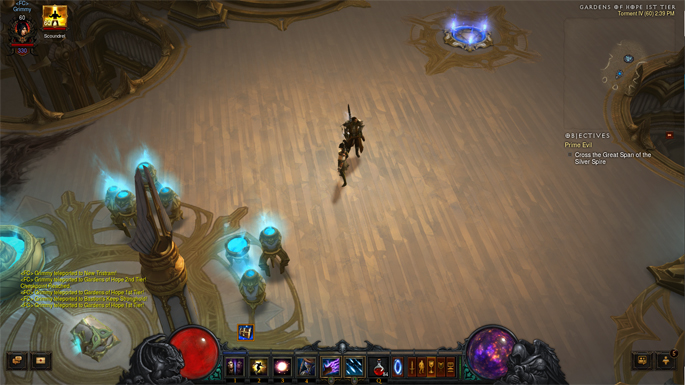
Another popular place to break vases for items in the early days of Diablo III
Patch 1.0.3
It wasn’t until Patch 1.0.3 that things really changed for Diablo III. Released on June 19, 2012, the patch changed numerous skills across all five classes but also was known as the Attack Speed nerf patch. The Attack Speed bonus on weapons and armors was reduced by 50 percent, though quivers were unaffected by the change. Items were also tweaked to drop in all Acts to help smooth out the difficulty curve while Magic Find was no longer taken into consideration when looting objects in the environment. The team also took the opportunity of changing the loot tables so destructible items no longer dropped anything generous in hopes that players would go back to slaying monsters rather than jars.
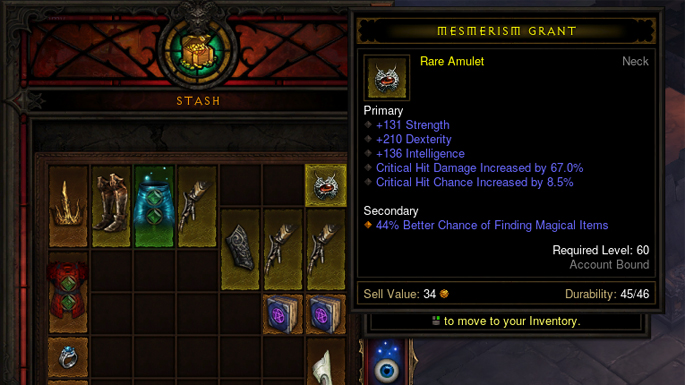
Blizzard hoped to make Magic Find a thing of the past
Patch 1.0.4
Two months went by before another major patch hit Diablo III, with 1.0.4 introducing the Paragon Level system, which went live on August 21, 2012. Giving players a new goal to reach, Paragon Levels began accruing once a character hit Level 60 and each Paragon Level gave a boost to character stats, Magic Find and Gold Find. With a cap of level 100, Paragon Levels became the new carrot dangling at the end of the stick. In addition, Blizzard changed how Magic Find would work, hoping to decrease the necessity of having the stat on the gear. A cap of 300 percent was put in place, and the team removed the averaging of Magic Find across all people in the group. Essentially, once a player hit Paragon Level 100, they would no longer need Magic Find on any pieces of their gear. Fine tuning was once again made to all the classes while Blizzard continued to enhance the Auction House experience.
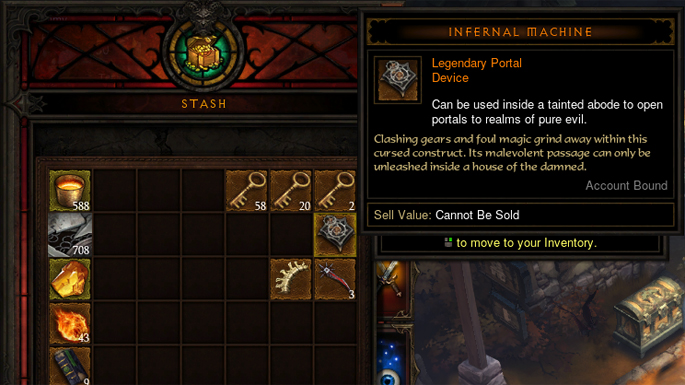
Ubers and Monster Power, inherited from Diablo II
Patch 1.0.5
The next Diablo III patch drew influence from its predecessor, with the introduction of Monster Power, which was similar to the “Players X” system in Diablo II. Players were now able to select the difficulty of their Inferno experience with a scale of MP1 to MP10 while receiving bonuses to experience as well as boosts to Magic Find and Gold Find that was above the 300-percent cap. Essentially, a new carrot was extended to players that wanted a challenge, as farming MP10 became the ultimate goal. To pair up with the addition of Monster Power, the Diablo team added the new Infernal Machine event, which spawned uber bosses to fight. Killing the ubers resulted in organ drops and players were able to craft the Hellfire Ring, one of the most powerful rings in the game. Patch 1.0.5 arrived on October 16, 2012.
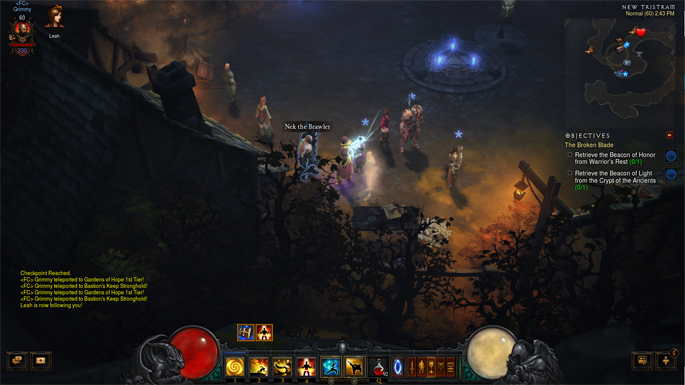
This is as close to PvP as Diablo III players will have for a while
Patch 1.0.7
The next major Diablo III patch went live on February 12, 2013 and added the Brawling feature to the game. Since PvP was now on the back burner, Brawling was introduced as a simple way for players to get their player-killing fix in. Other major changes that came with Patch 1.0.7 included the addition of Demonic Essences, new iLevel 63 crafting recipes and the Marquise gems. The goal of Patch 1.0.7 was that players would be able to farm Demonic Essences while farming for item drops, and if they had a disappointing session, they still had a chance for great gear to roll through the new iLevel 63 crafting pieces. More changes were made to each class and while everything leading up to and including Patch 1.0.7 were welcoming to Diablo III, the core foundation of the game was still flawed despite a vast improvement over the launch version.
To make this clear, players began creating their own method of playing, dubbed “self-found,” where they would only use gear that they found themselves, rather than resorting to the auction house. The major flaw to this was the fact that Diablo III at its core, should have been a self-found game. Players should have been satisfied with the loot that was dropping while they were slaying monsters, not having to salvage every bit of gold in order to purchase what they really wanted from the Auction House. The problem was further compounded with the fact that players were now able to grab any strong build off the Internet, purchase nearly identical gear on the Auction House and go romp through MP10. Naturally, those players wouldn’t be finding upgrades for their gear, and slowly but surely, the appeal to playing Diablo III died out for even the most passionate fans.
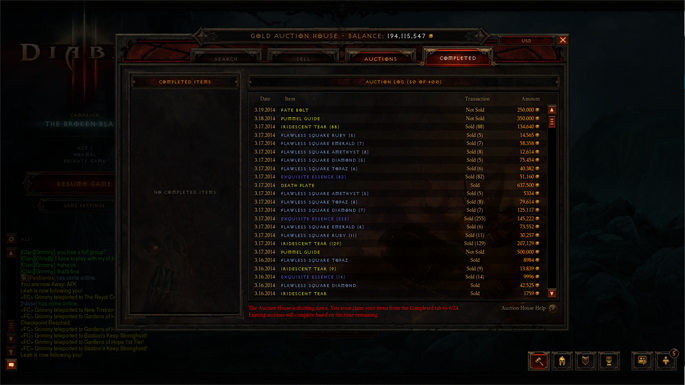
Bye bye Auction House, we’ll miss you (maybe)
Auction House Shutdown Announcement
When it became clear that there was going to be a lull of major content patches, Blizzard announced that the direction of the Diablo III team was changing. Out was Jay Wilson and in was Josh Mosquiera who took over the role of Game Director. Shortly after Mosquiera’s promotion, Diablo III’s expansion, Reaper of Souls, was announced on August 21, 2013, revealing Loot 2.0 and Paragon 2.0 along with the Crusader class, Act V and Malthael.
A couple of weeks later, Diablo III made its way tothe Xbox 360 and the PlayStation 3 on September 3, 2013, with numerous changes to the loot system in tow. Since there was no Auction House on the console versions of Diablo III, Blizzard had no issues enhancing drop rates compared to the PC and Mac versions of the game. Gamers that played both versions of Diablo III spoke highly of the changes in the console variant and how great it was to find usable loot just by playing the game. It was clear at the time that Blizzard was taking a real hard look at the Auction House and whether or not it should exist. Just a mere two weeks after the console version of Diablo III was released, Blizzard announced that the Auction House would be shutting down on March 18, 2014.
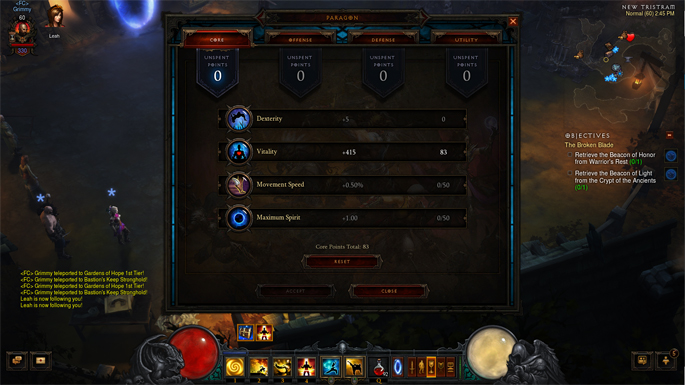
Paragon 2.0, Loot 2.0, and more recently went live
Patch 2.0.1
On February 25, the Diablo team dropped a surprise by launching Patch 2.0.1, its largest patch to the game yet and the first major patch in months. The number of additions made to Diablo III with Patch 2.0.1 are lengthy but includes Paragon 2.0, Loot 2.0, Nephalem Glory, Pools of Reflection, a new difficulty system, removal of Nephalem Valor, a huge overhaul of skills and more. In other words, Diablo III Patch 2.0.1 has been affectionately referred to as Diablo 3.5 by players and is the Diablo III many feel we should have had at launch. You can read our thoughts in Full Cleared’s Diablo III Patch 2.0.1 review.
Reaper of Souls and the Future
In just a few days, Reaper of Souls will be released for the PC and Mac on March 25, 2014. The first Diablo III expansion will increase the level cap to 70, add the Crusader class, a fifth Act, Bounties, Rifts and more. Some would argue that the expansion doesn’t even bring as many changes as Patch 2.0.1, but those have to understand that the huge patch is simply the foundation for Reaper of Souls. Having participated in the beta, we can agree that Bounties and Rifts will change the way Diablo III is played while seasoned veterans will look forward to checking out their new level 61 skills and passives. With just a few days left before the expansion goes live, we recommend that you check out our story on how to prepare for Reaper of Souls and read on to see what you have to look forward to in the expansion.


